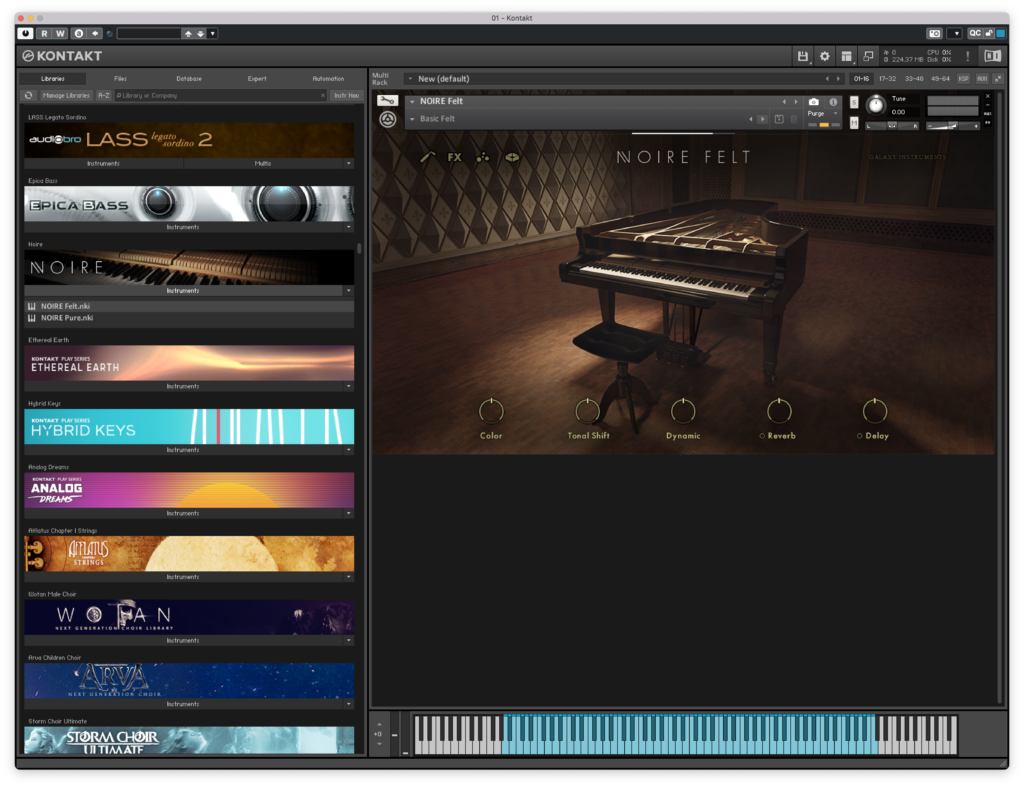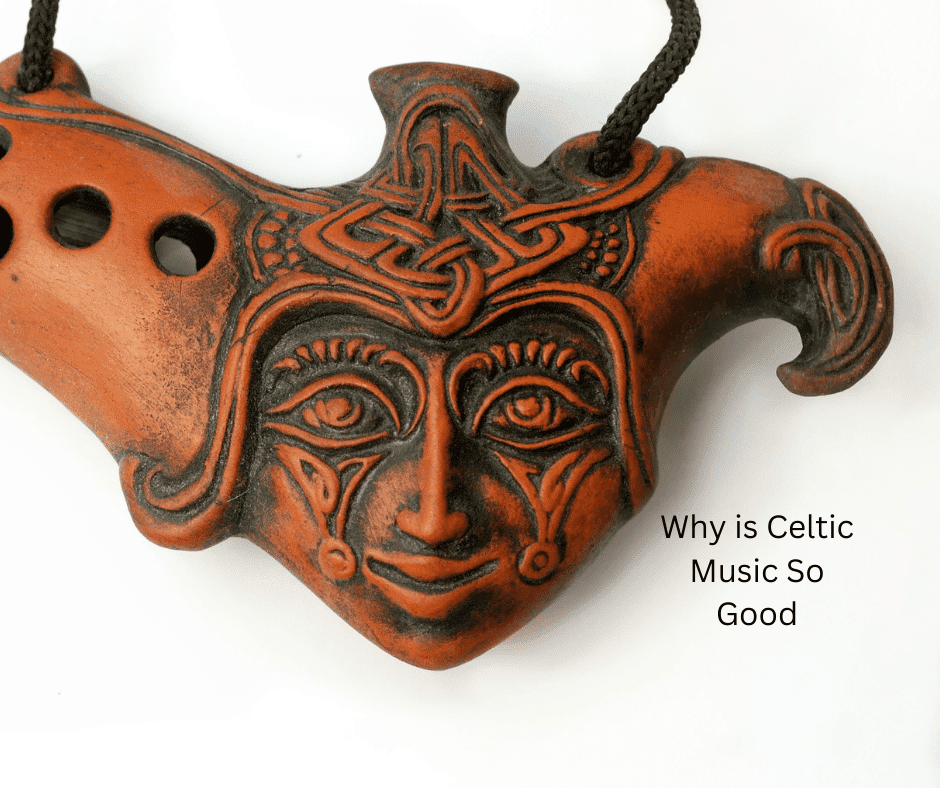9 Best Piano VST Plugins Reviewed by A Professional 2022
The VST plugin for pianos is one of my favorites. I created this guide to help you understand piano plugins. It has always been my belief that a good piano plugin can easily compete against real pianos in live performances.
There is no VST and Digital Piano comparable to playing an original instrument. I’m convinced the dynamics and feel of an acoustic piano are unsurpassed. Open your digital audio workstation (DAW) you’ll be using to record your new Piano VST, and put it to work.
Best Sounding Virtual Piano
As we did not do an best piano VST 2021, this article is current for 2022 and will be updated on an ongoing base. We know that our german audience is looking for their beste piano VST article, we have you covered here as well.
Special Case – VST Kontakt
Also, keep in mind that the Kontakt a free sample player based hosts several Kontakt piano libraries.
Kontakt has long been a favorite among music producers and sound designers and for good reason. The software is packed with powerful features, yet is still easy to use. And best of all, Kontakt is free. One of the most popular uses for Kontakt is as a host for piano libraries.

There are many high-quality piano libraries available for Kontakt, and the software makes it easy to load and play them. In addition, Kontakt offers a number of features that are particularly well suited for piano playing, such as the ability to layer multiple fantastic piano sounds and make detailed adjustments to the velocity curve.
As a result, Kontakt is an excellent choice for anyone looking for a free way to play virtual pianos.
Pedal Noises
Pedal noises are an important part of piano playing, and most good piano plugins allow you to control them. While the exact controls vary from plugin to plugin, they typically allow you to adjust the volume and type of pedal noise.
Some plugins also offer a realistic pedal spring noise, which can be adjusted to taste. If you’re looking for a truly realistic piano plugin, be sure to check out the pedal noise options.
Release Samples
Release samples are short recordings of the sound of the keys being released after being held down. They are an important part of creating a realistic piano sound, as they add realism to the release portion of each note.
Most good piano plugins offer release samples, and many allow you to adjust the level of the release noise.
Keyboard Position
The keyboard position is the distance from the player’s perspective of the hammers hitting the strings. This can be adjusted in most piano plugins, and it’s a good idea to experiment with different positions to find the one that works best for you.
Expert piano players generally prefer a more up-close keyboard position, as it allows them to better feel the action of the keys and see their fingers on the keys. Beginners may find a more distant keyboard position to be easier to play at first.
Overall, there are many factors that can make a piano sound more realistic. Be sure to experiment with the various settings in your piano plugin to find the ones that work best for you.
Sampled or Modeled Sound
Many of the best piano plugins are based on sampled or modeled piano sounds. These plugins use recordings of real pianos to create their sounds, and as a result, they can often sound very realistic.
The difference between sampling and physical modeling (modeled sounds) lies at the very heart of acoustic piano sound. With sampling, recordings of a real piano are analyzed in order to determine the various velocities at which different notes will be played.
This information is then used to create digital recordings that attempt to replicate the actual sound of a piano playing those same notes. In contrast, with physical modeling, the sound of an acoustic piano is recreated digitally from scratch.
This means that parameters such as hammer velocity and string tension can be adjusted to achieve a more complete representation of the natural sound of an acoustic piano. Although this approach takes more time and care, many musicians feel that it results in a more authentic and expressive sound.
Ultimately, whether you choose sampling or physical modeling depends on your own musical preferences and goals. Both methods have their advantages and drawbacks, but ultimately they are both parts of what makes the experience of playing an acoustic piano so rich and rewarding.
If you’re looking for a realistic piano sound, be sure to check out the sampled or modeled piano plugins.
Maybe you like some sampled piano VSTS sounds and also prefer physically modeled alternatives.
Electric Piano and Rhodes
Electric pianos come in many different varieties and styles, from mainstream models that are widely used in everything from jazz clubs to pop music concerts, to vintage models that skilled technicians have painstakingly restored.
One of the most iconic electric piano models is the Rhodes, a distinctive instrument that features a smooth, mellow sound perfect for adding texture and atmosphere to any musical composition. Whether you’re writing a new tune or performing your favorite cover song, a well-tuned Rhodes can add a timeless touch of class to your music.
So if you’re looking for the perfect addition to your composition toolkit, be sure to check out the wide selection of outstanding electric pianos and Rhodes on offer at your local music store. With a little bit of practice and plenty of soulful expressions, you’ll be able to kick up some serious musical magic on your electric piano in no time at all!
Tonal Difference Between Grand and Upright Pianos
The tonal difference between grand and upright pianos is striking. Grand pianos have a rich, full sound that is capable of filling even large rooms with sound, while upright pianos tend to be brighter and more focused in tone.
This is due in part to the shape and size of the instrument itself. While both types of piano benefit from a well-tuned soundboard and clean hammers, the design of an upright piano limits resonance and tone compared to its larger cousin.
Additionally, grand pianos tend to have long strings that produce lower notes with more power, while upright pianos typically are shorter, which creates a higher-pitched sound overall. Ultimately, these differences make the tonal character of each type of piano unique, allowing musicians to create a broader range of sounds across any given composition.
Things to Consider When Searching For The Best Piano VST
The piano vsti is based on the piano plugin VST and can provide several functions for each type of player. Your music producer needs vary from one person to another, which you must consider when considering your requirements.
If you are producing trance you might need an easier to use piano VST plugin. However, there may well be a few more factors worth looking into. Among the major considerations are that of the following:
– CPU: Some plugins are more demanding than others. The best will not strain your computer while you work.
– MIDI keyboard: A lot of modern pianos come with a USB connection which can be used to connect to a MIDI keyboard. If you have one, check that the VST plugin is compatible before you make your purchase.
– Sound quality: Piano plugins can vary when it comes to the sound that they create. The better ones have a realistic feel and can be used for many different types of music production.
– Interface: How easy is the piano plugin VST plugin to use? Is it intuitive and simple, or will you have to spend hours going through the manual to figure out how to use it?
– Compatibility: Does the plugin work with your DAW? If not, can you find a workaround or will you have to invest in additional software?
Now that we’ve looked at some of the things you need to consider before purchasing a piano VST plugin, let’s take a look at some of the best plugins on the market.
1. Ivory II-Grand Pianos
The first piano VST plugin on our list is Ivory II-Grand Pianos, from Synthogy. This plugin comes with a collection of eight different grand pianos, all of which have been meticulously sampled and lovingly crafted.
Ivory II-Grand Pianos has been designed to be as realistic as possible, and it certainly achieved that goal. The sound is stunning, and the level of detail is incredible.
The world’s most popular virtual grand piano collection just got better with the creation of Ivory II Grand Pianos. Featuring a greatly expanded sound set with nearly double the velocity layers, and the powerful, new Ivory II piano DSP engine with Harmonic Resonance Modeling for true Sympathetic String Vibration, Ivory II Grand Pianos soars at the highest possible levels of sampling and realism.
The included instruments span three centuries of piano history, from a beautifully preserved 1709 Stradivari to a turn-of-the-century Steinway Model D. Each one has been meticulously recorded in stereo at multiple velocities, and release samples capture every subtle nuance of their distinctive sounds. Additionally, all of the pianos have been finely tuned to concert pitch and feature-complete control over pedal noise, lid positions, and string resonance.
With its exceptional sound quality and playability, Ivory II Grand Pianos is sure to become the go-to virtual piano collection for discerning musicians all over the world.
2. Native Instruments Alicia’s Keys
Next up is the Native Instruments Alicia’s Keys (for the Free KONTAKT PLAYER or KONTAKT) , which has been designed to recreate the sound of famed jazz pianist and singer Alicia Keys.
The KONTAKT library combines a custom modeled piano sound with an intuitive interface that allows you to quickly make adjustments depending on your needs.
Alicia Keys is a musical powerhouse, and she has now joined forces with two other top-tier talents to create a virtual piano that meets her high standards. Thomas Skarbye, better known by his company name Scarbee, is a Danish sample specialist who has worked with some of the biggest names in the music industry.
Ernest Cholakis is an impulse response expert who has also collaborated with a long list of well-known artists. Together, they have created a virtual piano that captures the soulful sound that has become Alicia Keys’ trademark.
This piano sound helped her win multiple Grammys and reach the top of the charts, and it will surely continue to impress listeners for years to come. Thank you, Scarbee and Ernest Cholakis, for helping to bring Alicia Keys’ musical vision to life.
3. Pianoteq Stage
Another great piano VST plugin is Pianoteq Stage, from Modartt. This plugin features a wide variety of different instruments and styles, all of which can be adjusted to suit your particular needs.
Pianoteq Stage is a powerful virtual piano that gives you the ability to customize your sound in a variety of ways. You can choose from a wide range of instruments and performance styles, as well as modify the virtual piano’s tuning, velocity sensitivity, and many other parameters to match your own playing style.
Pianoteq Stage is a budget-friendly option for the musician who wants a close, intimate, responsive piano sound. It is based on the same physical model as Pianoteq Standard and PRO, which has been praised by many musicians for its close intimacy and responsiveness.
Pianoteq Stage offers the same great sound and playability as its more expensive counterparts but at a fraction of the price. If you’re looking for a high-quality, affordable piano sound, Pianoteq Stage is an excellent option.
4. Upright Piano by 99Sounds
Finally, we have the Upright Piano plugin by 99Sounds. This unique virtual piano offers a wide range of different sound options, making it an excellent choice for musicians who want to explore both traditional classical and more experimental styles.
The plugin features four sampled notes per octave and six dynamic layers per note. The user can adjust the attack and release time, tremolo intensity and speed, global volume, and key release volume, as well as the built-in low-pass filter and reverb effects. By adjusting these parameters, the user can create a wide range of sounds, from delicate pulses to cascading arpeggios.
The built-in effects add an extra layer of depth and dimension to the sound, making it perfect for creating atmospheric pads or lush soundscapes. Whether you’re a seasoned producer or just getting started, the plugin is sure to become a go-to tool in your sound design arsenal.
5. Front Piano by George Yohng
Not every virtual instrument needs an exhaustive feature set and 4 Front Piano is as minimalistic as possible. This sounds quite bright.
For a truly unique virtual piano experience, check out Front Piano by George Yohng. This plugin offers a wide range of different performance styles including jazz, pop, classical, and others.
Front Piano is a versatile plugin that allows you to create rich sounds with full control over all aspects of the virtual piano’s sound and style. You
Looking for a high-quality piano sound that doesn’t require any complicated setup or tweaking? Look no further than 4Front Piano. This versatile single sound instrument is ideal for musicians, producers, and composers working in a variety of genres, from classical to electronic music.
With its small memory footprint and low CPU usage, 4Front Piano is the perfect plug-and-play choice for musicians on the go. Whether you’re looking to use the instrument as a stand-alone source or as part of a larger production, this piano module has everything you need to get started right away.
So if you’re in search of a seamless piano experience with no fuss, look no further than 4Front Piano!
6. LABS Soft Piano by Spitfire Audio
Spitfire Audio LABS is a free-to-install virtual instrument available for VST and Aux plug-ins with numerous audio library libraries. Soft Piano is an piano library for the LABS workstations.
The samplings were recorded on felt-tip pianos in the Air-Edel Studio in London. It’s warm and subdued, therefore, you may find yourself in need of bright pianos that can be accessed by a quick attack. Two sliders regulate expressions and attack, and an independent knob controls the level of effervescence. It’s another plugin perfect for both musical and sound designs.
Recorded on a dry stage at Air Edel Studios, London, this intimate sound has become a favorite of musicians and composers across the globe. The soft tone is achieved by placing a thin strip of felt between the hammers and the strings.
The distinctive sound of a soft hammer piano has long been a favorite among musicians and composers. Recorded in a dry studio setting at Air Edel Studios in London, this intimate sound has been used on countless recordings as both the primary instrument and an accompaniment.
The secret to its rich, mellow tone lies in the thin strip of felt that is placed between the hammers and strings. Thanks to this simple but effective hack, the soft hammer piano produces a warm, resonant sound that is unmatched by any other type of piano.
Whether you’re looking to add texture and depth to your music or simply want to recreate that signature acoustic feel, there is no denying that the soft hammer piano is truly one-of-a-kind. So next time you’re looking for something special, look no further than the soft hammer piano for an experience you won’t soon forget!
7. PianoTeq 7 – Best Modeled Piano Plugins
If you’re looking for a high-quality virtual piano that is both powerful and easy to use, then Pianoteq is the perfect instrument for you. This versatile software additive synthesizer features numerous preset sounds that are all meticulously crafted by professional artists and sound developers.
Whether you want a classic grand piano sound or something more unique, like a vibraphone or harpsichord, Pianoteq has it all. And thanks to its innovative modeling technology, this powerful synth can recreate the subtleties of an acoustic instrument with incredible accuracy and realism.
So if you’re looking for a top-notch virtual piano that delivers stunning results every time, look no further than Pianoteq. You won’t be disappointed!
There are many different types of virtual instruments available today, but none quite match the power and versatility of Pianoteq. What sets this software apart from others is the fact that it is not based on sampled sounds, but instead features fully-modeled instruments based on real acoustic instruments.
This allows for unprecedented realism in sound and playability, making it perfect for musicians and composers who want to bring their musical creations to life. Additionally, Pianoteq takes up a fraction of the file space that other virtual instruments typically require, making it the perfect choice for any modern laptop.
Whether you’re an avid musician or a casual composer, anyone who values high-quality sound and intuitive control should give Pianoteq a try!
8. Keyscape by Spectrasonics – Most Diverse Piano Library
KEYSCAPE is an incredible virtual instrument that truly captures the magic of some of the most legendary keyboards in history. Featuring a stunning selection of vintage keyboards, this versatile software offers everything from grand pianos to electric organs and beyond.
Whether you’re looking for that classic piano sound or something completely unique, KEYSCAPE has got you covered. And with so many amazing instruments to choose from, it’s the perfect tool to unleash your inner keyboardist. So if you’ve been searching for the ultimate virtual instrument, look no further than KEYSCAPE – you’ll be amazed by what this software has to offer!
pianoteq vs keyscape. Which is better? Pianoteq offers a wider range of pianos, from grand pianos to upright pianos, and has a more realistic sound. Keyscape, on the other hand, only has grand pianos, but they are of a higher quality and have a more natural sound. If you’re looking for realism, then Pianoteq is the better choice. But if you’re after quality, then Keyscape is the better option.
The journey to creating the perfect keyboard sound is often long and winding, but for those who persevere, the results can be truly spectacular. Such is the case with the keyboards featured in Spectrasonics’ newsample pack. When it comes to creating the perfect keyboard sound, having the right equipment is crucial. Spectrasonics has gone above and beyond by carefully selecting only the best midi keyboards 49 keys to use in their sample pack. The precision and attention to detail in choosing these keyboards mean that musicians and producers can trust that they are getting top-quality sound and performance from the pack.
These ten instruments took years to restore and sample, but the end result is a collection of deep, rich, and expressive fantastic piano sounds that will inspire any musician to greater heights. From the classic tones of the grand piano to the ethereal beauty of the flute, this sample pack has something for everyone.
Keyscape is the ultimate virtual keyboard collection, containing over 500 of the world’s best sounds for all types of music production. From deep, cinematic pianos to ethereal pads and harps, Keyscape has something for everyone.
The carefully sampled piano sounds feature up to 32-way velocity switching, round robins, and more for a realistic playing experience.
Plus, each patch features authentic circuit modeled amplifiers and effects for an even more immersive sound. Whether you’re in the studio or on stage, Keyscape is perfect for any musician.
9. EZKeys – Best Piano VST For Songwriters
For musicians and songwriters looking to add unique layers of music to their work, there is no better tool than EZkeys. This powerful software comes packed with a variety of different instrument sounds that allow you to create intricate rhythms and melodies with ease.
Whether you are a piano or keyboard pro, or someone who is just getting started with music production, EZkeys offers something for everyone.
There’s no need to go it alone when it comes to songwriting – with EZkeys, you can now have your very own virtual co-writer to help you out. This award-winning software instrument provides you with a huge range of stunning sounds to choose from, as well as a powerful MIDI sequencer that will allow you to create realistic and lifelike performances.
With EZkeys, your imagination is the only limit – so why not give it a try today and see what this incredible tool can do for your music?
And beyond its impressive instrument sounds, EZkeys also provides intuitive tools that allow you to easily build new pieces from the ground up, even if you have no prior experience with music composition. So if you want an easy way to breathe new life into your songs, look no further than EZkeys!
Conclusion
Pianoteq, Spectrasonics’ Keyscape, and EZkeys are some of the best piano VST plugins available on the market today. They offer a wide range of sounds, features, and controls that make them perfect for any musician or songwriter.
Whether you’re looking to add new layers of music to your work or create entire pieces from scratch, these powerful tools will give you the power and flexibility you need to get the job done. So why not give them a try today and see what they can do for your music?
Best Piano VST Plugins FAQ
What Is the Best Piano Plugin?
The best piano plugins are the ones that offer a wide range of features and sounds to choose from. They should also be easy to use and provide a realistic playing experience. With so many different options on the market, it can be tough to know where to start.
What is a VST piano?
Piano VSP/Plugin: The piano VST is an emulator for piano software. This is simply a software system and nothing else. To play the instrument with your keyboard, you must be using MIDI keyboards and the 78 key weights.
What does VST stand for?
Virtual Studio technologies) It’s a plug-in format for digital audio workstations manufactured by Steinberg Media Technologies GmbH. It is an original format for effect and accepts MIDI data in external formats. This transforms VST into an integrated software sound source platform.
How do you practice piano notes?
You could use a simple method of saying the name of the note out loud as you play it on the piano. So if you’re playing a C, you would say “C” out loud as you strike the key. You could also try using a keyboard sticker to help you learn where the notes are.
When did MIDI become popular?
MIDI was first developed in the early 1980s and quickly became popular with musicians and composers around the world. It is now an essential part of many music-making setups, both in the studio and on stage.
What are some good piano songs to learn?
Some popular piano songs that you might want to learn include “Für Elise” by Ludwig van Beethoven, “Clair de Lune” by Claude Debussy, and “Piano Sonata No. 14 in C-Sharp Minor” by Wolfgang Amadeus Mozart.
How do you play a minor chord on the piano?
To play a minor chord on the piano, you will need to use the first, third, and fifth notes of the minor scale. For example, if you are playing a C minor chord, you would use the notes C, Eb, and G.
How do you practice music notes?
One popular method of practicing music notes is to use flashcards. This involves writing the name of a note on one side of a card, and the corresponding key on the other side. You can then practice by flipping through the cards and trying to identify the notes as quickly as possible.
Another great way to practice music notes is by using a piano or keyboard. You can play one note at a time, and then use your ear to identify the note by sound alone. This helps you improve your ability to recognize notes quickly and accurately. Finally, you can also practice music notes by writing them out on staff paper, or by using software programs that help teach musical concepts.
How do you memorize piano notes?
One way to memorize piano notes is to use a simple mnemonic device. For example, note C can be remembered as “C for the cat.” Note D can be remembered as “D for dog.” And so on. You can also use fingerings to help you remember the notes. For example, you could use your index finger to play all the C notes, your middle finger to play all the D notes, and so on.
Another strategy is to practice regularly, learning new songs or scales as you go along. This will help you familiarize yourself with different keys and patterns, which will in turn make it easier to remember the notes. You may also find it helpful to work with a teacher or music tutor who can guide you and provide feedback along the way. Additionally, there are many online resources, apps, and tools that can help you practice and improve your skills. Whether you use flashcards, games, puzzles, or other interactive tools, consistent practice is key when learning to play the piano.
There is no one “fastest” way to learn notes on the piano. However, some methods may be faster or more effective for some people than others. Some ways to learn piano notes include using mnemonic devices, practicing regularly, working with a teacher or music tutor, and using online resources and tools. Experiment with different methods to find what works best for you, and be sure to set aside plenty of time and practice consistently in order to improve your skills and master the piano.











